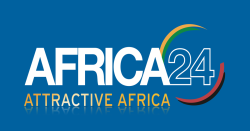From November 19 to 22, 2025, the AFRICA24 Group (https://Africa24TV.com) will offer exceptional coverage of the 12th edition of the Visa For Music Festival 2025, a major event celebrating the cultural richness of Africa, the Middle East and beyond, through a vibrant and eclectic programme.
This edition of Visa For Music, held in Rabat, Morocco, aims to be a vibrant cultural crossroads, bringing together artists, professionals and festival-goers around a rich and diverse programme.
Visa For Music 2025 : A major four-day event offering:
- Opening ceremony: Grand urban parade through the streets of Rabat.
- Showcases: Continuous cultural entertainment on the esplanade of the Mohammed V National Theatre.
- Conferences: Opportunities for discussion on the major challenges facing the music industry.
- Expostand: More than 50 exhibitors from around the world.
About Visa For Music :
Created in 2014, Visa For Music is the first music festival and market in Africa and the Middle East, held annually over four days in November in Rabat, Morocco, on the initiative of ANYA Culture, a Moroccan cultural engineering organisation, and Atlas Azawan, an association for the promotion of culture and heritage. This event, dedicated to promoting global musical diversity with a particular focus on Africa and the Middle East, is a crucial platform for artists, music professionals and actors in the creative and cultural industries (CCI). It provides a space for meeting, exchanging ideas and creating fruitful collaborations.
The AFRICA24 Group 360° coverage and global broadcasting to 120 million households
Watch ‘Visa For Music 2025’ live, on replay and on demand on all your screens at :
- AFRICA24 in French (channel 249) et AFRICA24 English (channel 254) of the Canal+ Africa bundle
- On myafrica24 Africa's first HD streaming platform.
- On https://Africa24TV.com which offers you a full access to all our programmes.






